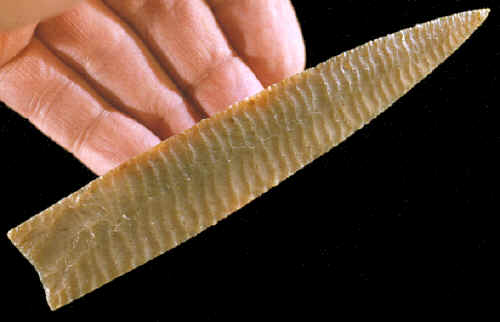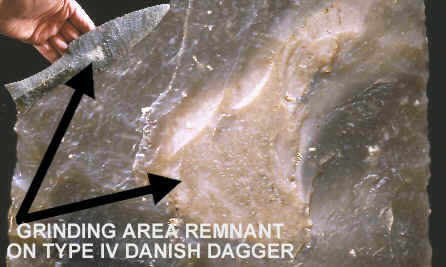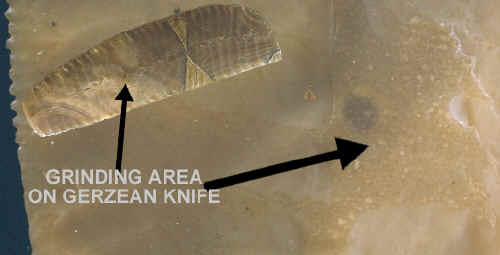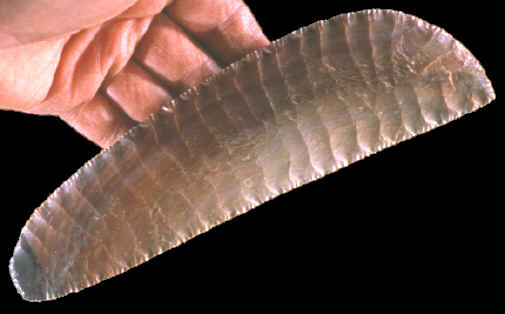|
|
|
Flake-over-grinding is a stone tool manufacturing technique that is rarely seen in the archaeological record. There are only two areas in the world where the process was used for the production of large knives and ceremonial pieces. There is no evidence that the technique was used, traditionally, within any of the many Stone Age cultures in North America. |
|
|
|
|
Flake-over-grinding was used during the manufacture of some of the different types of Neolithic daggers in northern Europe towards the end of the Neolithic period. Predynastic Gerzean knives and some Fishtail bifaces from northern Egypt alone the Nile River were also made by grinding the surface of a preform then pressure flaking over the prepared surface. |
|
|
|
|
Modern knappers are producing some very spectacular examples of flake-over-grinding points these days. The knappers of today are using much better equipment than the knappers of ancient times. Motorized grinders are their best piece of equipment. There are not to many examples of ancient flake-over-grinding because hand grinding preforms is a time consuming process. Flake-over-grinding was assigned to making ceremonial objects like Predynastic Fishtail bifaces and show pieces like the type IV Neolithic daggers. Otherwise, normal stone tool manufacturing techniques were the rule of the day. |
|
|
|
|
Richard Warren will always be remembered for his exquisite lanceolate spear points that he made with his innovative flake-over-grinding process. His art work is becoming more recognized each year by art collectors and by flintknappers who are learning about his work. |
|
|
"REFERENCES" 2002, Nelson, Larry, "The Richard Warren I Knew", Chips, Vol. 14, #4, pp. 16-18. |
|



